Animal Adaptation Lesson
This animal adaptation lesson goes with What Do You Do with a Tail Like This? by Steve Jenkins and Robin Page. I designed the lesson for first grade. It would work for other elementary grades as well. I get commissions for purchases made through the affiliate links in this post.
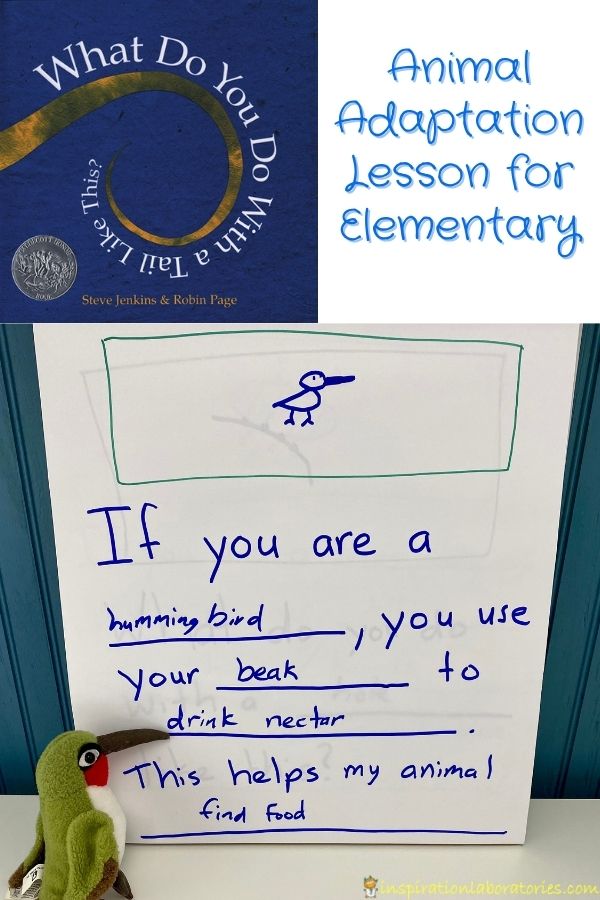
Animal Adaptation Lesson for First Grade
I created this adaptation lesson for an interview I had as an elementary science specialist. I taught the lesson to a group of first graders during the interview process.
I practiced the lesson on my after school nature club with first and fourth graders as well as my own first grader (and my just-turned-5-year-old).
How to Begin the Animal Adaptation Lesson
I started the lesson with a question – what do animals need to survive?
Students answer with food, water, air, shelter, and space (or whatever words you have previously taught them). Instead of shelter, they might say protection from predators. Instead of space, they might say place to live/room to grow.
Then, we talk about how each animal has a special way to get the things it needs to survive. They have body parts to help them out. We call these special features/body parts adaptations. An adaptation is a feature that helps the animal survive.
I introduced the lesson objective next. “We are going to talk about how adaptations of different animals help them survive.”
Introduce the Book: What Do You Do with a Tail Like This?

The lesson is based on the book, What Do You Do with a Tail Like This? by Steve Jenkins and Robin Page. The book is set up as a guessing game. The first page shows close ups of an animal part on 5 different animals. Can you guess what animal owns each part? The next page shows the full animals and tells us what is special about the part for each animal. It describes why that part is an adaptation. The book goes through different animal noses, ears, tails, feet, and mouths. The back of the book gives even more information about each animal introduced.
Read the Book
As you read the book, be sure to highlight exactly how some of the adaptations help the animals survive. For example, how does a sense of smell help the hyena? It helps them find food.
Make the Reading Interactive
I printed out animal cards with a picture of the animal and the text, “If you are a [animal name], you use your [part] to [function].” I passed out one card to each student.

While we were reading, I asked students to watch for their animals. When they spotted their animal, they were to hold up the animal card.
When we were on the page with the animal parts, I asked them if they could spot their animals.
Animal Adaptation Worksheet
After we read the book, I gave students a worksheet to practice what we learned with their own animals.
On the first page of the worksheet, they are to draw a body part of an animal mimicking the closeup style of the book. Then, they fill in the blank – “What do you do with a _________ like this?”
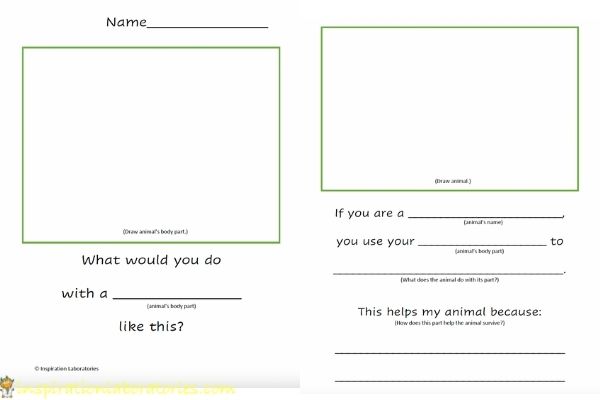
On the second page, there is space to draw the whole animal. They again fill in the blanks to describe their animal’s adaptation.
“If you are a ______, you use your ________, to ________. This helps my animal because: ______.”
Below the blanks, there is text to help remind them what to fill out.
Practice Together
Before I let the students do the worksheet on their own, we practiced together with two animals.
I brought a hummingbird puppet and a real Madagascar hissing cockroach.
I recreated their worksheet on chart paper. (I was teaching the lesson outside.) You could also project this digitally on the screen.
I showed them the hummingbird puppet and chose the beak as my animal part.
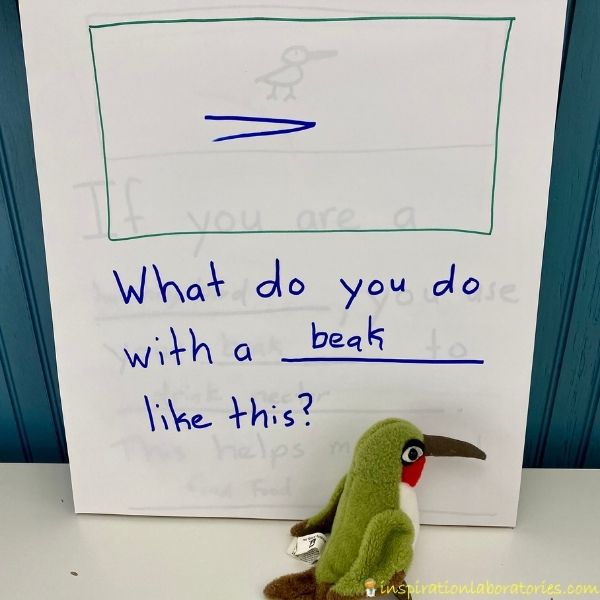
The hummingbird puppet we have is from Wildlife Artists. I can’t find a link to it. Here is a link to a hummingbird plush from Wild Republic.
Then, we filled in the blanks on the second page. What does the hummingbird use his beak for? To drink nectar. How does this help the bird? To find food.
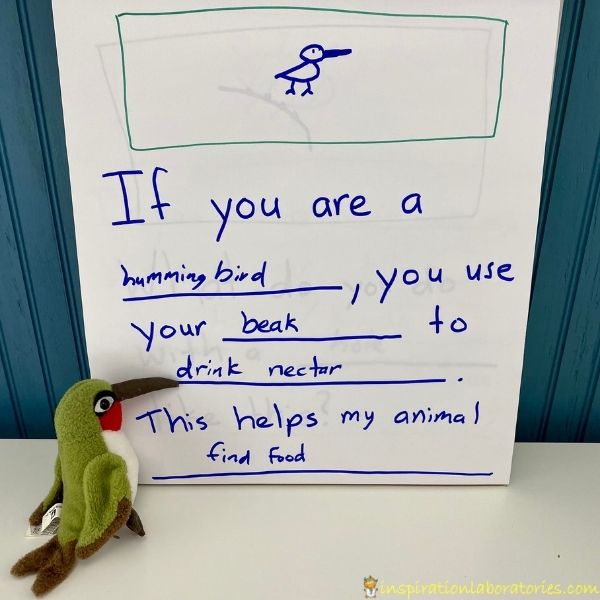
We repeated the same things for the Madagascar hissing cockroach. I walked around and showed the hissing cockroach to the students. I talked about where she was from, what made her an insect, and what special parts she has. We focused on the spiracles.
The spiracles are holes on the sides of the cockroach. They breathe through the spiracles. One pair of spiracles is extra special. When the cockroach passes air through these holes, it makes a hissing sound. The female hissing cockroaches use this for defense – to scare away predators. The males use the hissing sound for communication as well.
I added the hissing cockroach spiracles (holes) to my first page.
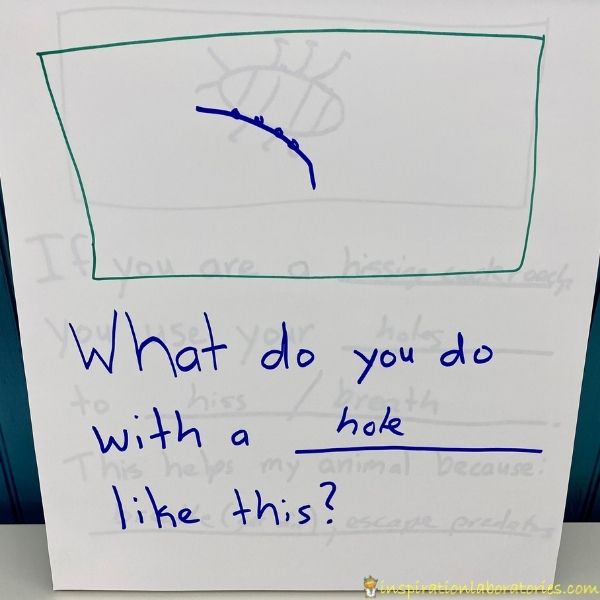
Then, we filled out the second page. What does the hissing cockroach use the holes/spiracles for? One student said to breathe. This is technically correct, so we added it to our chart. What else do they use their holes/spiracles for? They hiss!
How does this help our hissing cockroach survive? To escape from predators!
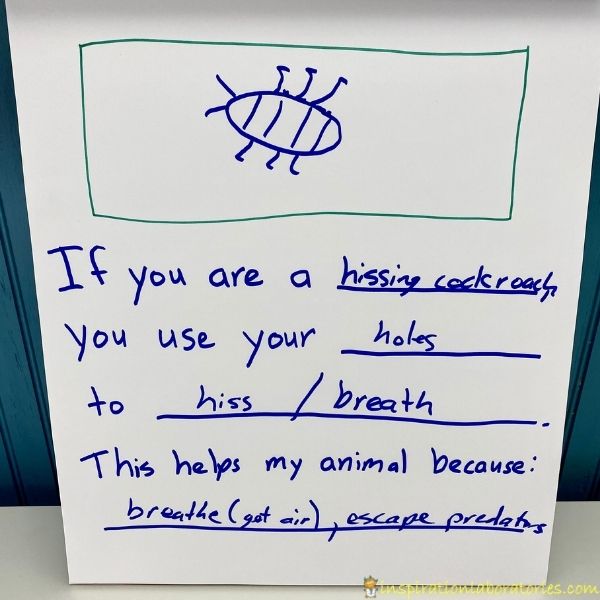
After our practice together, I passed out the worksheet and gave each student a toy animal. They could use their toy animal to fill out the worksheet or they could choose whatever they wanted.
The toy animals gave them something tangible to look at and reference. What body parts do you see on the animal? How do the parts help the animal survive? Choose one part and focus on that one.
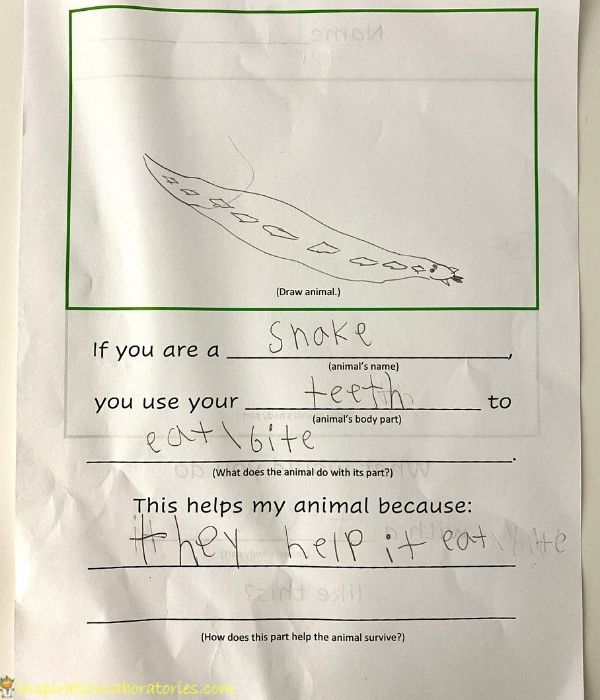
In addition to toy animals or animal pictures, you could have books about specific animals. Sometimes the students didn’t know how the body parts helped their animals. One student chose the rhino, but she didn’t know what the rhino’s horn was used for. Having a book about a rhino would have allowed her to look up more information.
Download the Worksheet
You may download the worksheet for your own classroom or personal use.

More Animal Activities
Endangered Species Poster Project – Learn about endangered species and create an informational poster to teach others.
Animal Habitat Drawing Activity – Inspired by a silly book, create habitats for different animals.
Backyard Nature Activities – This ideas are a great way to connect with nature right in your own backyard.
Subscribe to the Inspiration Laboratories newsletter. Each issue has exclusive hands-on science explorations for children, a recap of our latest activities, and special resources selected just for you!
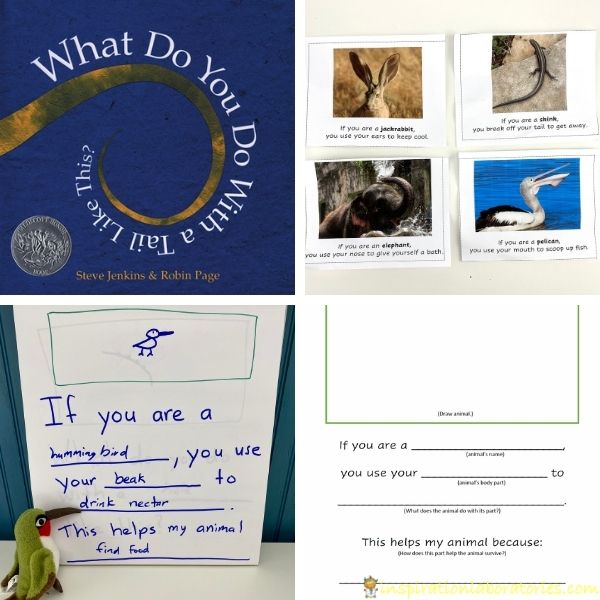

Leave a Reply